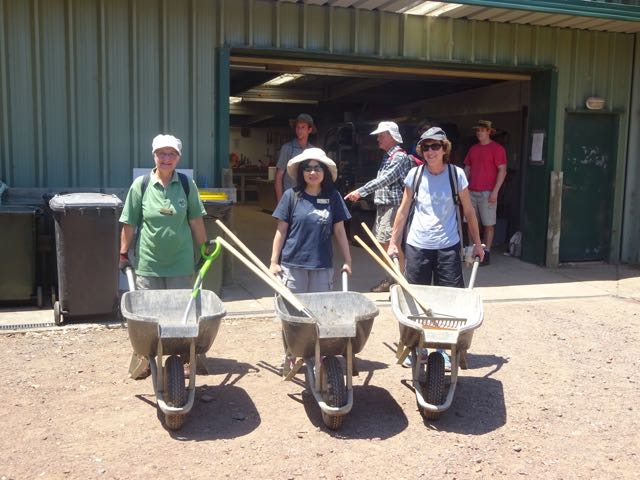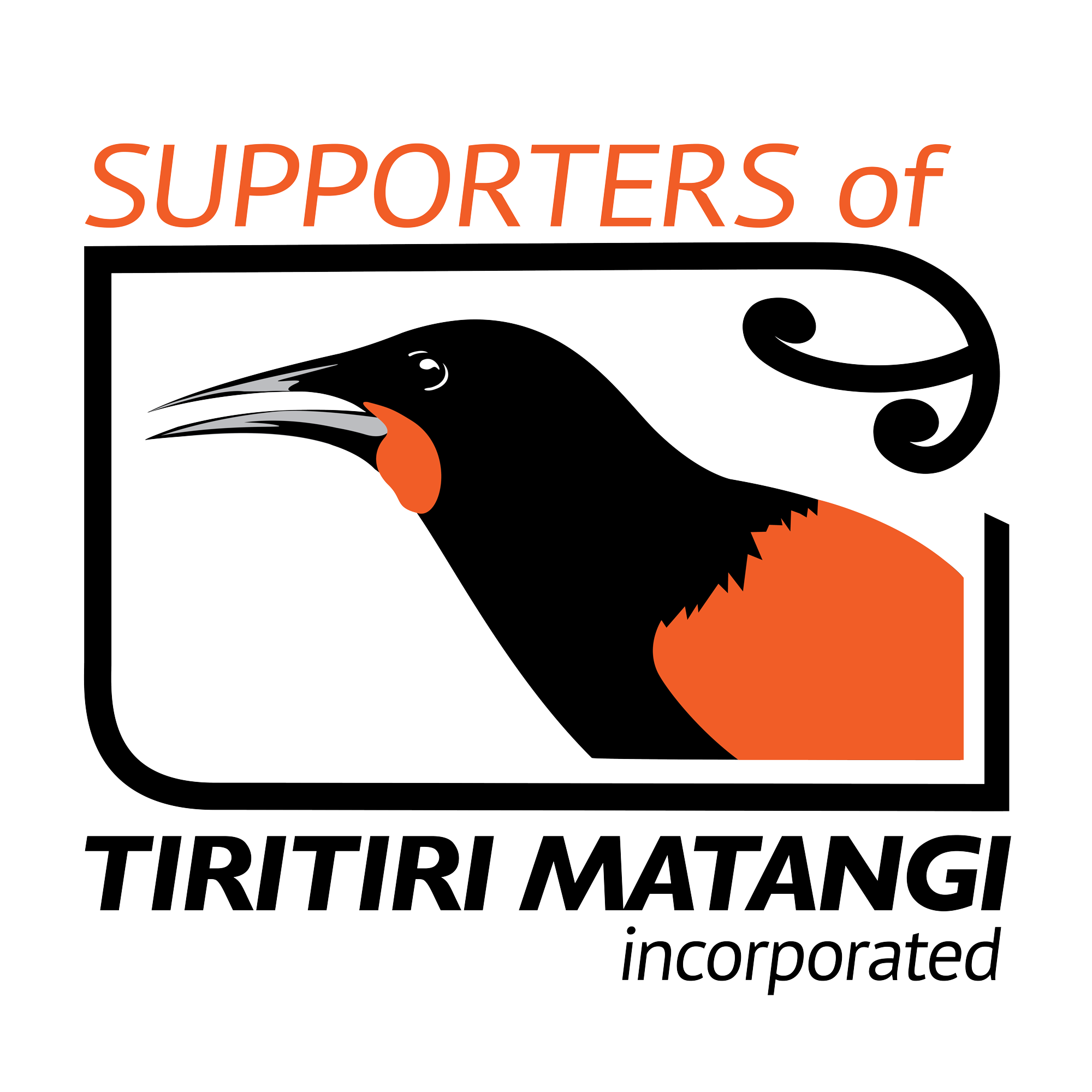The Sanctuary
Commonly known as ‘birdland’, Aotearoa / New Zealand once occupied the rare status of being almost free of mammals, except for a few species of primitive bats. That all changed once humans arrived, bringing with them an unwanted cargo of rats, mice, stoats, possums, rabbits, hedgehogs and more.
Humans quickly decimated Aotearoa’s larger birds, and these new predators lay waste to this unwitting wildlife, which had survived in an ecosystem that prized camouflage and an ability to freeze so they would not be seen. Needless to say, these hapless birds made an easy lunch for fast-moving, sharp-eyed mammals who could sniff out their prey.
Since human arrival in New Zealand, at least 51 bird species, three frog species, three lizard species, one freshwater fish species, one bat species, four plant species, and a number of invertebrate species have become extinct.
In an effort to arrest the decline of those species on the brink, life rafts in the form of pest free sanctuaries have popped up throughout New Zealand since the 1980s.
Lying three kilometres from the mainland, the island of Tiritiri Matangi was an inspired choice. The fast-moving Tiri channel formed a watery barrier for predators, and the 22 hectare island was large enough to provide a home for a range of wildlife.
Indeed, within a couple of decades after it was declared a scientific and nature reserve, this re-forested island was full-to-bursting with wildlife that could be transferred to other emerging sanctuaries. The first translocation from the island were six tīeke/saddleback that were taken to Mount Bruce.
Since then, eight more species of birds have been translocated from Tiritiri to various sanctuaries across the country.
The story of Tiritiri Matangi
Like much of the mainland, the forest on this island had been cleared for cattle and sheep farming in the 1800’s. Four gullies were largely unfarmable, so these were left forested and remained a refuge for more resilient species such as the tūī, pīwakawaka/fantail, tauhou/silvereye, riroriro/grey warbler, korimako/bellbird and pūweto/spotless crake.
In 1971 the farm lease was withdrawn. The island was designated a recreation reserve and then left to regenerate according to the wisdom of the time. After 100 years of farming the soil was dry and densely packed, thanks to the hooves of cattle, sheep, pigs and goats – making it hostile territory for native seeds.
Auckland University scientists John Craig (zoologist) and Neil Mitchell (botanist) argued that natural regeneration would take many lifetimes. They advocated for a more active approach which would enable generations of young New Zealanders to witness community conservation in action.
After receiving seed funding from WWF in 1982, the team set about replanting the island by recruiting a volunteer ‘spade brigade’, and reintroducing rare birds to the island. Their vision was one of an ‘open sanctuary’ which placed people at the heart of the project by allowing the public to be involved in the creation and evolution of this sanctuary.
With the successful eradication of the kiore/pacific rat in 1993, the island could finally flourish as a pest-free haven.

From 1984 to 1994, boatloads of volunteers replanted 280,000 trees and shrubs, starting first with one of the hardiest species, the pōhutukawa. The former lighthouse keeper, Ray Walter and his wife, Barbara, were recruited to run an onsite nursery. This nursery was soon filled with 30 species of saplings grown from seeds sourced from Tiritiri Matangi and nearby islands.
Native species that have self-colonised
Korimako/bellbird – Anthornis Melanura
Taranui/caspian tern – Hydroprogne caspia
Kuaka/common diving petrel – Pelicanoides urinatrix
Pakahā/fluttering shearwater – Puffiness gavia
Riroriro/grey warbler – Gerygone igata
Ōi/grey-faced petrel – Pterodroma macroptera
Kororā/little penguin – Eudyptula minor
Ruru/morepork – Ninox novaeseelandiae
Tūturiwhatu/New Zealand dotterel – Charadrius obscurus
Kōtare/New Zealand kingfisher – Todiramphus sanctus
Kererū/New Zealand pigeon – Hemiphaga novaeseelandiae
Pīwakawaka/New Zealand fantail – Rhipidura fuliginosa
Pūtangitangi/paradise shelduck – Tadorna variegata
Kāruhiruhi/pied shag – Phalocrocorax varius
Pūkeko – Porphyrio melanotus
Tarāpunga/red-billed gull – Larus novaehollandiae
Matuku moana/reef heron – Egretta sacra
Pipiwharauroa/shining cuckoo – Chrysococcyx lucidus
Tauhou/silvereye – Zosterops lateralis
Karoro/southern black-backed gull – Larus dominicanus
Pūweto/spotless crake – Porzana tabuenis
Tūī – Prosthemadera novaeseelandiae
Tōrea pango/variable oystercatcher – Haematopus unicolor
Warou/welcome swallow – Hirundo neoxena
Tara/white-fronted tern – Sterna striata
Native species that visit but do not breed
Kahu/australasian harrier – Circus approximans
Kawau/black shag – Phalacrocorax carbo
Kawau paka/little shag – Phalacrocorax melanoleucos
Koekoeā/long-tailed cuckoo – Eudynamys taitensis
Kākā – Nestor meridionalis
Miromiro/tomtit – Petroica macrocephala
Matuku moana/white-faced heron – Egretta novaehollandiae
Fast growing, the pōhutukawa forms a canopy for other slower growing species, shading out the thick grass and providing shelter from the exposed conditions. Once cover was established, taraire, kohekohe, pūriri, and many others were planted to recreate the original forest environment, while providing a pantry of nectar and fruit for new wildlife arrivals. To help satisfy the thirst of this growing wildlife population, the team also constructed a series of dams to bolster the small scattering of natural freshwater sources.
Around 60% of the island is now covered in regenerating forest. The remainder has been left open to provide a mix of habitats. Plants provide both shelter and food for wildlife, so getting the right mix is critical to the survival of threatened species. To ensure it is just right for the resident and predicted animal populations it is monitored regularly. The un-forested areas include sections of grassland, which are important for many reasons: to protect archaeological sites, allow uninterrupted views of the Hauraki Gulf and provide habitat for species such as lizards and birds, including takahē.
The little island that could
At the time of embarking on this ‘wild idea’, John Craig and Neil Mitchell had no idea that this island project would become a world recognised bastion of community conservation. The groundswell of support has evolved into a tight-knit community that manages and monitors this evolving ecosystem (Biodiversity plan link) and works to bring threatened species onto the island.
As the trees mature on the island and the vertical habitat grows, forming an understory and canopy, it opens up new ecological spaces for threatened species – allowing them to occupy different layers of the forest. As well as opening up opportunities for the translocation of bats, lizards and invertebrates, this increased forest cover may encourage the settlement of visitors to Tiritiri Matangi such as the miromiro/North Island tomtit, koekoeā/long-tailed cuckoo, and North Island kākā.
As important pollinators, prey and predators, the translocation of insects is a key part of the island’s Biodiversity plan (link), and currently several candidates are being shortlisted such as the giant centipede, large flightless beetles and giant land snails. The translocation of these threatened species will not only provide safe harbour for these often overlooked species, but will also provide an important education and advocacy tool.
Underfoot there is also the opportunity to provide pest-free homes for burrowing seabirds such as the ōi/grey-faced petrel, kuaka/common diving petres and pakahā/fluttering shearwater, as these only exist in small remnant populations on the island. As the bird capital of New Zealand, the Hauraki Gulf was once alive with large colonies of seabirds, and islands like Tiritiri no doubt held bustling colonies of these birds.
Already there are a number of projects underway to draw seabirds to the northern part of the island. Broadcasting their calls, as well as chick translocations are currently being considered to speed up the colonisation of keystone species.
The Future
Once denuded and barren, this small island is now bustling with life thanks to the tireless work of volunteers. Little by little, new life came onto the island in boxes big and small. Some winged it to this new destination by themselves, others rode ferocious storms. And over the last three decades, it has grown in richness. Now full-to-bursting with wildlife, Tiritiri is used to populate emerging sanctuaries with long-lost feathered inhabitants.
Tiritiri provides a shining model of community conservation that has been replicated throughout the Hauraki Gulf and beyond. And crucially, it provides an important site for advocacy and education. Translocations and self-reintroductions, alongside careful weed and pest management, continue to make the island richer and richer day by day.
